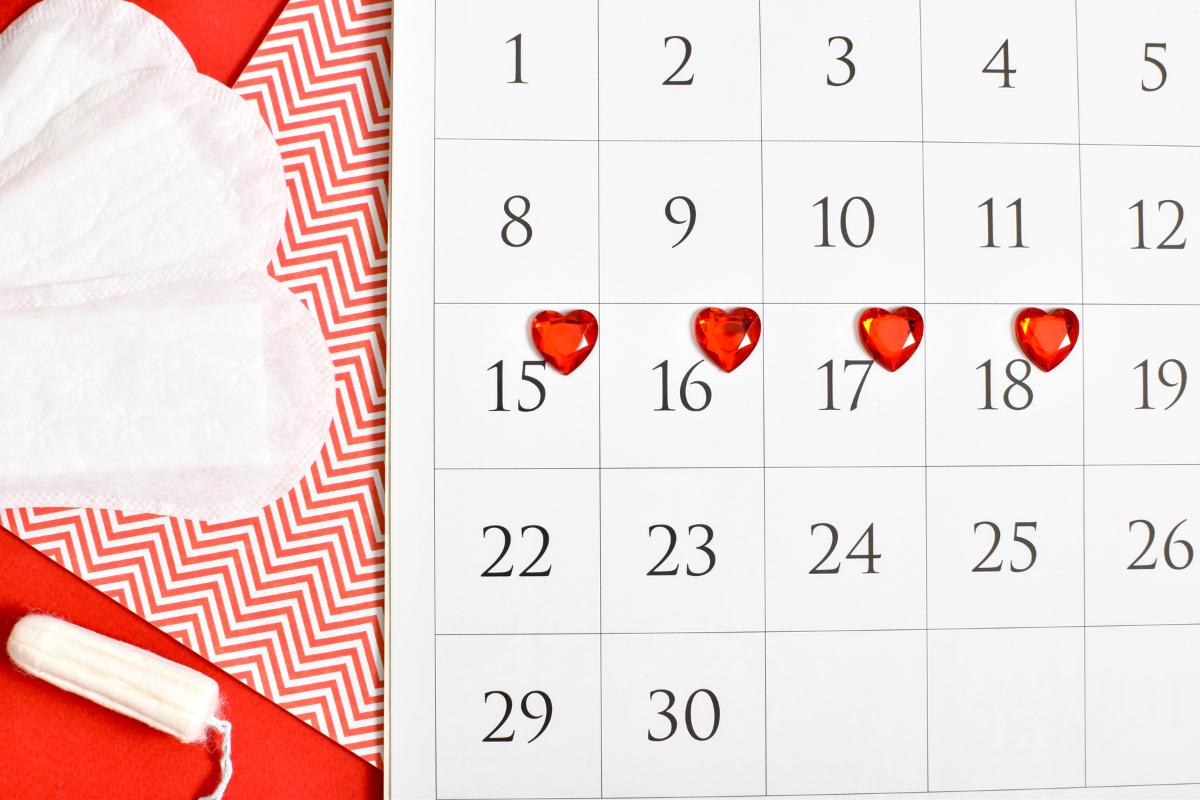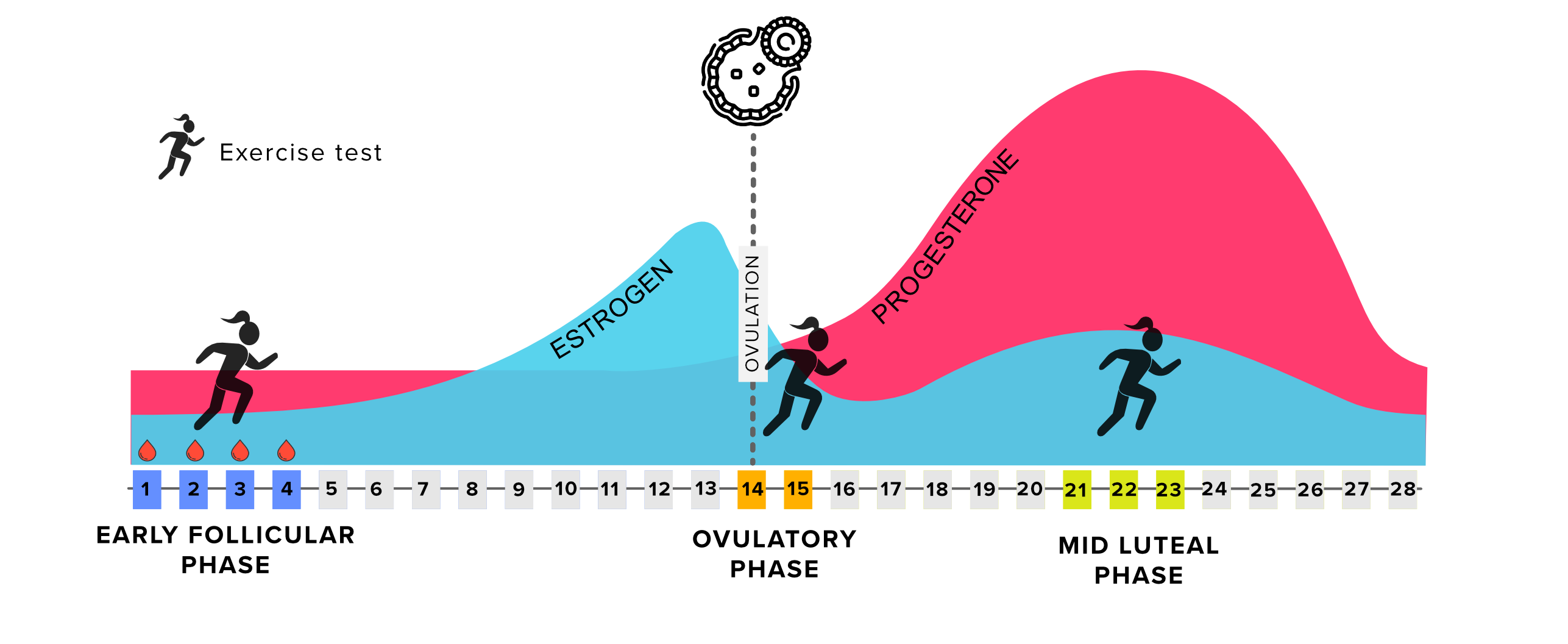Optimizing training around your menstrual cycle? New research shows that might not be that simple.
Researchers have found that there is no time in the menstrual cycle where all women have a greater chance of performing better or worse.

Many women experience physical and psychological symptoms that fluctuate during their menstrual cycles. Motivation, how ready you feel to train, and physical well-being may be affected. Therefore, there has been a lot of talk recently that it can be useful to plan your training according to your menstrual cycle.
Now researchers at UiT The Arctic University of Norway have results that provide new insight on this. They have found that what menstrual cycle phase you are in does not affect the physical fitness of athletes on a general basis.
None of the measured factors were influenced by the menstrual cycle on a group level.
“This means that there is no point in the menstrual cycle where all women have better or worse physical fitness,” says Madison Taylor.

She emphasizes that as a woman you can have cyclical effects, but not all women follow the same pattern.
Taylor is one of the researchers behind the study and part of the FENDURA (Female Endurance Athlete) project, which is led by UiT. Her research aims to map how the menstrual cycle affects physical fitness and performance in endurance sports.
The research was recently published in the journal Medicine & Science in Sports & Exercise.
Physical tests in different phases
To find out whether the menstrual cycle affects physical fitness, the researchers invited female endurance athletes to take part in the project. The athletes had to be naturally menstruating, that is, they could not use hormonal contraception.
The athletes had to complete tests in three different phases of their menstrual cycle: in the follicular phase, around ovulation and in the middle of the luteal phase.
These are phases of the cycle where the amount of the hormones estrogen and progesterone varies in the body, and one could expect that performance may be affected.
In the follicular phase, both estrogen and progesterone levels are low, while around ovulation estrogen is high and progesterone is low. In the luteal phase, both hormones are elevated.
The tests that were conducted are commonly used to test physical fitness and give an indication of the athletes' ability to perform.
The athletes were tested in a series of submaximal 5-minute intervals with a gradual increase in speed, a 30-second full-effort double-pole ski ergometer test, and a maximal incremental treadmill running test, where the athletes had to run faster and faster until they couldn't do it anymore.
The researchers measured oxygen uptake, blood lactate and time to exhaustion.

Some performed better, some worse
“None of the factors we measured were influenced by menstrual cycle phase when we look at group level. This means that there was not one phase of the cycle where women are expected to have better or worse fitness or performance,” says Taylor.
But the researchers observed some individual differences.
Some women performed worse around their menstrual bleeding, while others performed better, and many seem to have no effect, says the sports researcher.
This shows that a 'one-size-fits-all' approach to training around the menstrual cycle is unlikely to be beneficial for a group of athletes. Instead, one must make individual plans, if necessary, that suit a person's symptom patterns.
“The only way to train meaningfully according to your menstrual cycle is to log your own cycle and understand how it affects you as an individual,” says Taylor.
About the project:
FENDURA (Female Endurance Athlete) is led by the School of Sport Sciences at UiT The Arctic University of Norway.
The project is a close collaboration between UiT, NTNU, Olympiatoppen, the Norwegian Ski Association and the Norwegian Biathlon Association.
The project is financed by the Tromsø Research Foundation (TFS).
Test centers for the project were at UiT, NTNU, Nord University, Norwegian School of Sport Sciences and Kristiania University College.
Currently, there is no evidence to support that menstrual cycle-based training programs are an effective strategy, especially if it comes in the form of using a specific plan for a group of athletes with the intention of optimizing performance. For instance, some might recommend that everyone should train harder in the luteal phase compared to the follicular phase, because then you get better adaptations to the training sessions. This just isn’t true.
“Our research shows that when we look at a group of women, there is no indication that physiological requirements for exercise change throughout the cycle, at least not in the same way for everyone. Some women may have better endurance in the follicular phase, while some are better in the luteal phase, and many probably have no noticeable effect,” says Taylor.
Important research finding
The fact that the researchers found no effect of the menstrual cycle at group level is an important finding for research in general.
“In research, this is important because women have often been excluded as participants from sport science research for fear that fluctuations from the menstrual cycle will affect the testing outcomes. Our findings mean that we can include women in research studies. The menstrual cycle will not affect the results. So, there is a sigh of relief in the research community,” says Taylor.
She explains that although at group level there is no clear pattern to the physical demands of exercise, at an individual level women can experience a lot of pain, changes in motivation and even sleep disturbances.
Therefore, it is important to separate observations from the group level from individual experiences.
“Women experience changes throughout the menstrual cycle, but for the most part they probably do not experience the same thing at the same time. But on an individual level, women do experience things. Some women feel worse when they bleed, but some actually feel at their best,” says Taylor.
Nevertheless, there is still a bias in who is willing to join the study. Some women may not want to carry out such hard tests during different phases of the cycle.
“It's not much fun to carry out hard tests if you're suffering from period cramps, for instance,” says Taylor.
What is a normal cycle?
Broadly speaking, Taylor believes we need to find out more about what constitutes a normal menstrual cycle. There is so much we don't know, both when it comes to ovulation and the rest of the cycle.
“For example, is it normal to have 12 ovulations in a year, or is it normal to skip an ovulation? Some women have pain around the menstrual bleeding, while other women also feel pain during ovulation. Other women have sleep problems related to their cycle. There are a lot of different things going on,” says Taylor.
Now we have statistical models and artificial intelligence, tools that can be used to understand this better.
“To get more insight on this, we need a large number of women who follow their menstrual cycle over a whole year. Only then can we find out what is normal and what is problematic,” says the researcher.
She says that a major discovery they made during the study was that almost 40% of the participants had a menstrual disturbance. They were then excluded from the study.
“We started with 74 participants, and ended up with 21,” says Taylor.
Training planning
So, if there is no clear pattern on how we can plan the training around the menstrual cycle, how should coaches go plan the training for female athletes or entire female teams?
Scheduling training according to the menstrual cycle for an entire team is impossible. And according to Taylor's research, it doesn't even make sense.
Still, some girls or women may benefit from adjusting to their menstrual cycle, just as you will consider other factors for individuals if you are a good trainer. This must be part of the checklist, Taylor believes.
She emphasizes that the effect of the menstrual cycle is very individual. Some people can have very strong effects both physically and psychologically. If this is the case, trainers should be open to adapting the training accordingly.
“But the menstrual cycle is also an important indicator of health and well-being, which gives a warning signal if something is wrong. Therefore, it is good to know what is normal for a woman's body. Because if things change, then we know something is wrong,” says Taylor.
Tips from the researcher
Learn to know your own cycle. Log your cycle for 2-3 months.
Monitor motivation, pain patterns, sleep quality, muscle recovery, fatigue and other patterns.
Think about whether the symptom is a one-time thing, or if it appears every cycle around the same time. Think: Is this symptom reoccurring and predictable?
Remember that stress also affects hormones and thus also the cycle.


